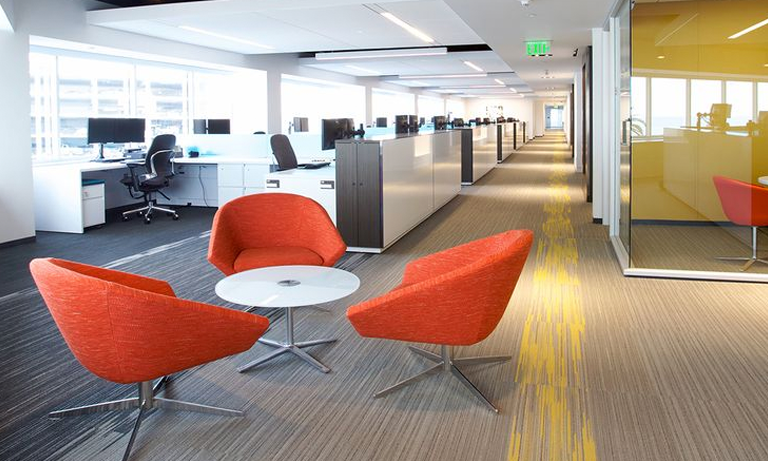 People are therefore losing an average of 116 hours of work per year, which equates to almost 17 working days
People are therefore losing an average of 116 hours of work per year, which equates to almost 17 working daysOpen plan offices as an idea originated in the 1960s, but have since become common practice when it comes to office design. The thought process behind them is that by removing the barriers between employees, you increase their interaction and inspire people to work together creatively.
Do open plan offices work?
There is little if any evidence to show that these theories are accurate. If anything, people who work in open plan offices often find it difficult to concentrate, due to background noise and a feeling that they are constantly being watched. Companies have found that rather than improve productivity, a move to an open plan office can actually reduce it.
If this is the case, why then do companies continue to use open plan offices? The main reason is cost – open plan offices are much cheaper per square foot than ones with enclosed work spaces. With open plan layouts unlikely to go anywhere anytime soon, behavioural researchers at Harvard University recently undertook a study to see if changes to open plan office designs could make a difference.
Research results
The first thing the researchers did was to look at two Fortune 500 companies who were making a change to open plan offices. They measured over 100,000 conversations between employees, before and after their offices became open plan. While Harvard acknowledges this was a small sample, it showed a significant drop in face-to-face conversations following a move to open plan offices – up to 70%.
Instead, employees turned to email and instant messaging to communicate with each other. Similar changes were seen across genders and departments, suggesting that employees respond in the same way to working in open plan layouts, and managers reported drops in productivity across the board.
Loss of privacy seems to be a major factor in this drop in productivity, as are distractions such as hearing other people on the telephone. These are issues, however, which experts in office design feel can be addressed without costing companies significantly.
Changes you can make to open plan offices
Adding barriers between desks is one of the things you could consider. Evidence shows that the higher the barrier, the more productive staff are, as it gives them privacy and also helps reduce distractions. When choosing barriers, consider the layout of the desks and the height of the barriers, as this will impact how noise moves around a space.
If the layout is wrong, you might find the noise increases, which is something you don’t want. Materials play a part in how sound travels. Glass walls and hard floors may look sleek, but sound bounces off these surfaces. Instead, choose materials that absorb sound instead or use technology like sound-masking speakers.
Where people socialise in an office, as well as work, is also important. Researchers found that bigger lunch tables improved communication and increased productivity, as did arranging for staff to take breaks at the same time.
While these changes might seem counter-intuitive, they do work, and are worth implementing if your business is suffering from lower than expected productivity.
Recruiters love this COMPLETE set of Accredited Recruitment & HR Training – View Training Brochure








